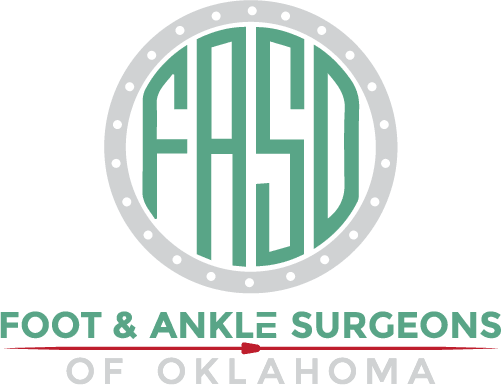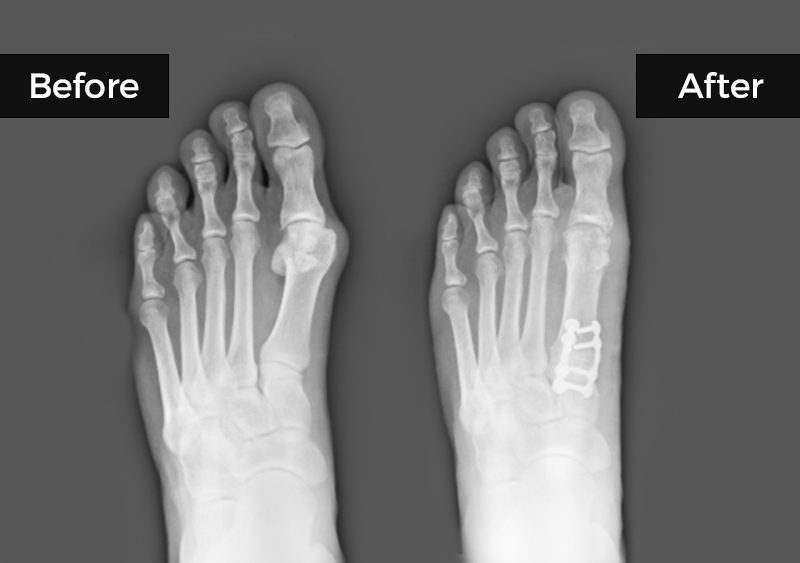Bunions are a common foot problem that can cause a lot of pain and discomfort. They’re a bony bump that forms at the base of your big toe, making your foot look misshapen. Bunions happen when the bones in the front part of your foot move out of place. This causes the tip of your big toe to get pulled toward the smaller toes and forces the joint at the base of your big toe to stick out.
Key Takeaways
- Bunions are bony bumps at the base of the big toe
- Caused by misalignment of foot bones- Can be hereditary or caused by footwear choices
- Symptoms include pain, swelling, and difficulty moving the toe
- Surgery may be necessary if conservative treatments fail
Many people get bunions because of the shoes they wear, especially tight or high-heeled shoes. But bunions can also run in families or be caused by certain foot shapes or medical conditions. If you have bunions, you might notice:
- A bulge on the side of your foot at the base of your big toe
- Swelling, redness, or soreness around your big toe joint
- Pain that comes and goes
- Trouble moving your big toe
Bunions can lead to other foot problems such as corns, calluses, or hammertoes. The misalignment of the big toe can also affect your balance and the way you walk, potentially causing issues in your ankles, knees, and hips over time.
When Is Bunion Surgery Needed?
Not everyone with a bunion needs surgery. Doctors usually suggest trying other treatments first, like wearing wider shoes, using special pads, or taking pain medicine. But if these don’t help and your bunion is making it hard to do everyday things, surgery might be the best option. Learn more about bunions and hammertoes to understand when surgery might be necessary.
You might need bunion surgery if:
- You have a lot of pain that doesn’t go away with other treatments
- Your big toe is always swollen and sore
- Your toe is starting to move toward your other toes
- You can’t bend and straighten your big toe
- You have trouble finding shoes that fit because of your bunion
It’s important to note that the decision to have bunion surgery should be made in consultation with a qualified foot and ankle surgeon. They will assess the severity of your bunion, your overall health, and your lifestyle to determine if surgery is the right choice for you.
Types of Bunion Surgery
There are different types of bunion surgery, and the best one for you depends on how bad your bunion is. Here are some common types:
- Traditional open bunionectomy: This is where the doctor makes a cut on the side of your foot to remove the bunion and fix the bones.
- Minimally invasive bunion surgery: This uses smaller cuts and special tools, which can mean less pain and faster healing.
- Lapiplasty 3D bunion correction: This is a newer type of surgery that fixes the bunion in three dimensions, which can help prevent it from coming back.
Each type of surgery has its own benefits and considerations. For example, minimally invasive surgery may offer quicker recovery times, while Lapiplasty may provide a more comprehensive correction of the underlying deformity. Your surgeon will discuss these options with you and recommend the best approach based on your individual case.
At Foot and Ankle Surgeons of Oklahoma, we offer all these types of surgery. Discover our Lapiplasty 3D Bunion Correction procedure to see if it might be right for you.
What Happens During Bunion Surgery?
When you come to Foot and Ankle Surgeons of Oklahoma for bunion surgery, here’s what you can expect:
- First, you’ll have a meeting with one of our doctors. They’ll look at your foot, take X-rays, and talk to you about the best type of surgery for your bunion.
- Before the surgery, we’ll give you instructions on how to get ready. This might include stopping certain medicines or not eating for a while before the surgery.
- On the day of surgery, you’ll come to our clinic. Most bunion surgeries are done as outpatient procedures, which means you can go home the same day.
- You’ll be given anesthesia so you don’t feel pain during the surgery. This might be local anesthesia (where just your foot is numbed) or general anesthesia (where you’re asleep).
- The doctor will do the surgery, which usually takes about an hour.
- After the surgery, you’ll spend some time in a recovery room before going home.
During the procedure, the surgeon will make precise cuts in the bone to realign the joint. They may use small screws, plates, or wires to hold the bones in their new position as they heal. The incision will then be closed with stitches, and your foot will be bandaged.
Learn about our expert surgical team who will be taking care of you during this process.
Recovering from Bunion Surgery
Getting better after bunion surgery takes time and patience. Here’s a general timeline of what to expect:
- First few days: You’ll need to keep your foot elevated and use ice to help with swelling. You’ll have bandages on your foot and might need to use crutches or a special shoe.
- First few weeks: You’ll have follow-up appointments to check how you’re healing. The doctor might take out any stitches and give you exercises to start doing.
- 1-2 months: You might start to put more weight on your foot and begin physical therapy to help you walk normally again.
- 3-6 months: Most people can start wearing regular shoes and doing their normal activities by this time.
Bunion Surgery Recovery Timeline
Remember, everyone heals at different rates. Your doctor will give you specific instructions based on your surgery and how you’re healing. It’s crucial to follow these instructions carefully to ensure proper healing and prevent complications.
Long-Term Results of Bunion Surgery
Most people who have bunion surgery are happy with the results. They usually have less pain and can wear shoes more comfortably. But it’s important to know that:
- Your toe might not look perfectly straight after surgery
- You might not be able to wear very tight or high-heeled shoes
- There’s a small chance the bunion could come back
- Follow all of your doctor’s instructions
- Wear shoes that fit well and don’t squeeze your toes
- Do the exercises your doctor or physical therapist gives you
Long-term success also depends on maintaining good foot care habits. This includes wearing properly fitting shoes, avoiding high heels or narrow toe boxes, and continuing any recommended foot exercises or stretches. Regular check-ups with your foot and ankle surgeon can help monitor your progress and address any concerns promptly.
Why Choose Foot and Ankle Surgeons of Oklahoma?
At Foot and Ankle Surgeons of Oklahoma, we’re experts in treating bunions. Here’s why many people choose us:
- Our doctors are specially trained in foot and ankle surgery
- We use the latest techniques and technology
- We offer personalized care to each patient
- We have a track record of successful surgeries and happy patients
Our commitment to excellence extends beyond just surgical skills. We prioritize patient education, ensuring you understand your condition and all treatment options. We also offer comprehensive post-operative care to support your recovery and long-term foot health.
Meet our experienced foot and ankle surgeons and see why we’re the right choice for your bunion treatment.
Common Questions About Bunion Surgery
Here are some questions people often ask about bunion surgery:
| Question | Answer | Status |
|---|---|---|
| Are your doctors specialized in foot and ankle surgery? | Yes, our doctors are specially trained in foot and ankle surgery | Positive |
| Do you use advanced techniques and technology? | Yes, we use the latest techniques and technology | Positive |
| Is the care personalized? | Yes, we offer personalized care to each patient | Positive |
| Do you have a good track record? | Yes, we have a track record of successful surgeries and happy patients | Positive |
| Can I meet the surgeons before deciding? | Yes, you can meet our experienced foot and ankle surgeons | Positive |
| How do I schedule a consultation? | Contact us to schedule your bunion surgery consultation | Action Required |



